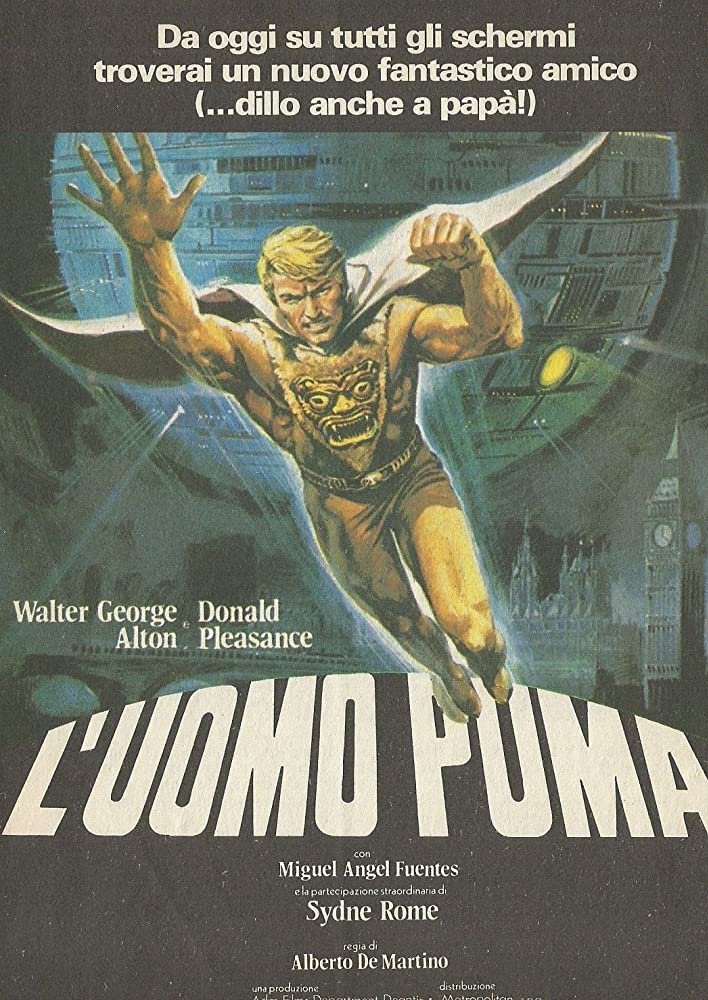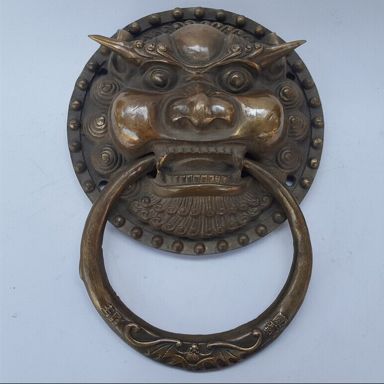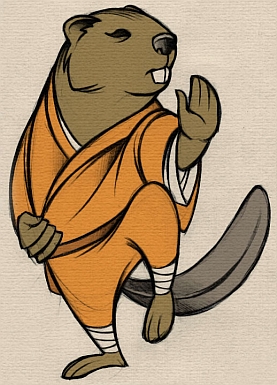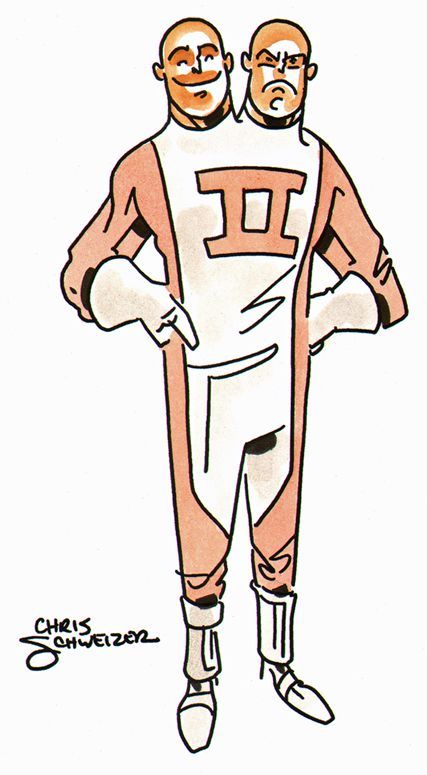The Pumaman!
Last week, I got my print-on-demand copy of Alan Bahr’s Tiny Supers, published by Gallant Knight Games. (Nota Bene: The first link in the previous sentence is an affiliate link.) In my last post, I offered my initial thoughts, praises, and criticisms for Tiny Supers. I also presented the heroic Shaolin Beaver as a Tiny Supers character.

Speaking a superheroes, if you’ve never seen The Pumaman, you have missed one of the worst movies ever filmed. The plot is jaw-dropping. You see, a really long time ago, aliens visited the Aztecs, became the Aztecs’ gods, and, it would seem, one alien took a human wife. Their son was the first Pumaman, a demigod with superpowers and a mind-controlling mask made of gold.
Fast forward to the late 70s/early 80s. The evil Dr. Kobras (played with minimal investment by Donald “I Won Four Lead Actor Tony Awards” Pleasence) has acquired the mind-controlling gold mask and a collection of crude mannikin heads resembling important men. Kobras plans to use the mask and the heads to mind control his way to world domination.
Meanwhile, American Tony Farms gets chucked out a window by Vadinho, the hulking yet wise Aztec who is the last high priest of the alien Aztec gods. Vadinho knows that Tony is the only living descendant of the first Pumaman. With the aid of a magic belt and Vadinho’s coaching, Tony learns to use his Pumaman powers in order to save the world. The Pumaman’s powers? Well, just like a puma, he can fly and phase through solid objects. Also, he’s got really good eyesight and is super-strong.
As ridiculous as all that sounds, it’s ridiculouser watching it unfold on the screen. How ridiculouser? Well, Pearl forced Mike and the bots to watch The Pumaman on Mystery Science Theater 3000 back in 1998.
Which, of course, brings us to Pumaman for Tiny Supers.
Pumaman
Real Name: Tony Farms
Belief: “I am the Pumaman, guardian of the world!”
Weakness: “I’m a ladies’ man. No, really! I am.”
Archetype: Paragon
Archetype Trait: Extra Power. Select an additional Power from the Power List.
Stress: 7
Powers:
Armored (Tier 1). You reduce all damage by 1 (to a minimum of 1).
Flight (Tier 1). You can fly, moving to near the speed of sound at your peak. It takes you two actions to reach your top speed.
Phasing (Tier 1). You may become incorporeal. You may not interact with physical objects and cannot be harmed by physical attacks, although energy attacks are still effective. You may only move at half your normal rate while you are incorporeal.
Super Senses – Sight (Tier 1). You ignore any penalties for having your sight impaired or reduced (such as ignoring blindness).
Super-Strength (Tier 1). If you don’t have it, you gain the Strong Trait. Your Melee attacks do +1 damage.
Traits: Educated, Strong
Mastered Weapons (3d6): Puma Claw Strike
Proficient Weapons (2d6): Punch



